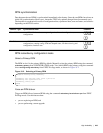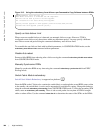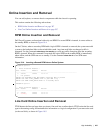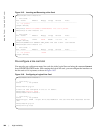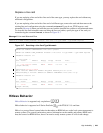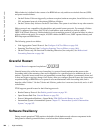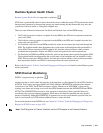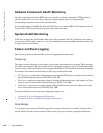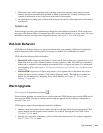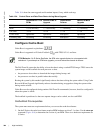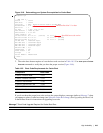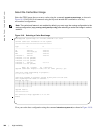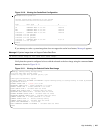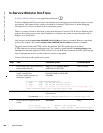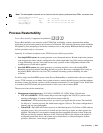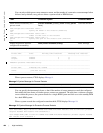High Availability | 393
• The kernel is the central component of an operating system that manages system processors and
memory allocation and makes these facilities available to applications. A kernel core dump is the
contents of the memory in use by the kernel at the time of an exception.
• An application core dump is the contents of the memory allocated to a failed application at the time of
an exception.
System Log
Event messages provide system administrators diagnostics and auditing information. FTOS sends event
messages to the internal buffer, all terminal lines, the console, and optionally to a syslog server. For more
information on event messages and configurable options, see Chapter 4, System Management.
Hot-lock Behavior
FTOS Hot-lock features allow you to append and delete their corresponding CAM entries dynamically
without disrupting traffic. Existing entries are simply are shuffled to accommodate new entries.
FTOS offers the following Hot-lock features:
• Hot-lock IP ACLs (supported on E-Series, C-Series, and S-Series) allow you to append rules to and
delete rules from an Access Control List that is already written to CAM. This behavior is enabled by
default and is available for both standard and extended ACLs on ingress and egress. For information
on configuring ACLs, see Chapter 8, “IP Access Control Lists (ACL), Prefix Lists, and Route-maps,”
on page 133.
• Hot-lock PBR (supported on E-Series only) allows you to append rules to and delete rules from a
redirect list that is already written to CAM without disrupting traffic. This behavior is enabled by
default. For information on configuring Policy-based Routing, see Chapter 37, “Policy-based
Routing,” on page 801.
Warm Upgrade
Warm Upgrade is supported on platform e
Warm software upgrades use warm failover, which means that FTOS reboots the secondary RPM and all
line cards and SFMs. The chassis remains online during the upgrade, but forwarding is interrupted, as
shown in Table 18-4.
FTOS supports warm software upgrades under two conditions:
• between consecutive feature releases where only the second digit differs between the running FTOS
version number and the upgrade version number. For example, and upgrade from FTOS version
7.6.1.0 to 7.7.1.0 is warm.
• between two consecutive maintenance releases of the same feature release. For example, upgrading
from 7.7.1.0 to 7.7.1.1 is warm.



